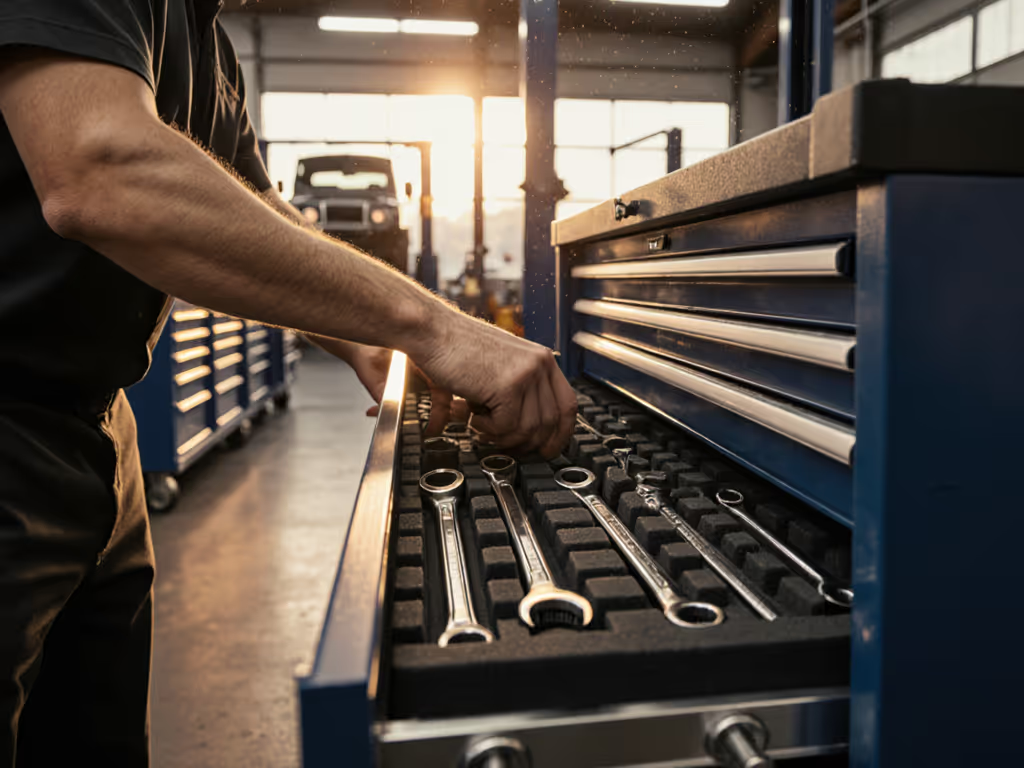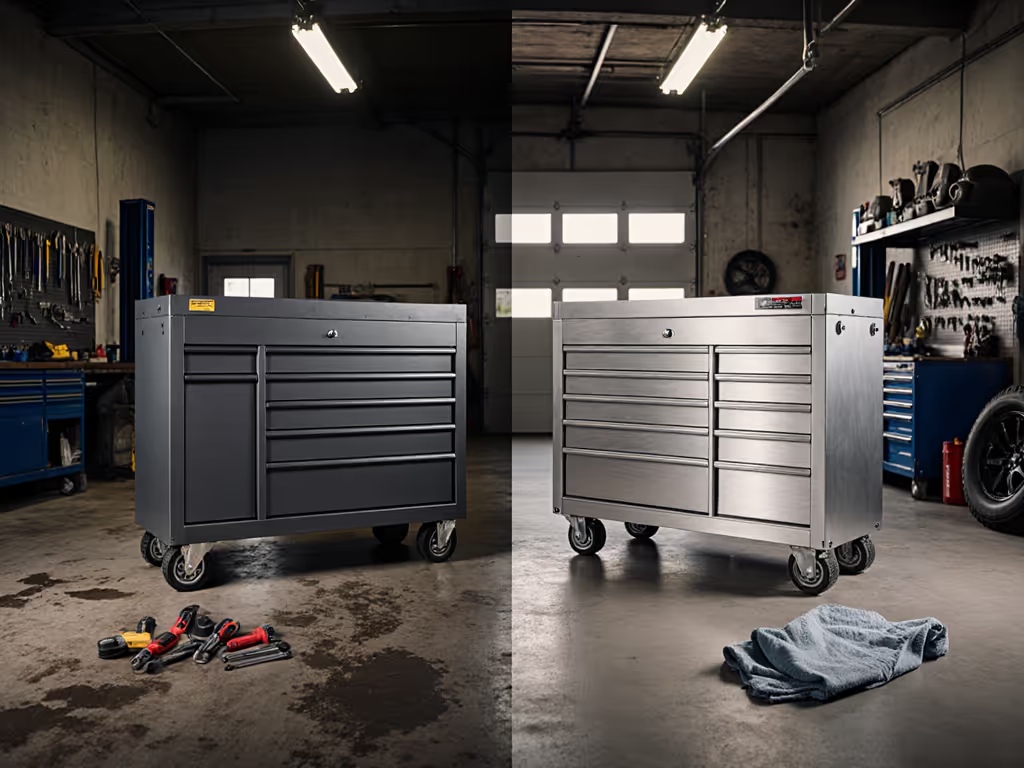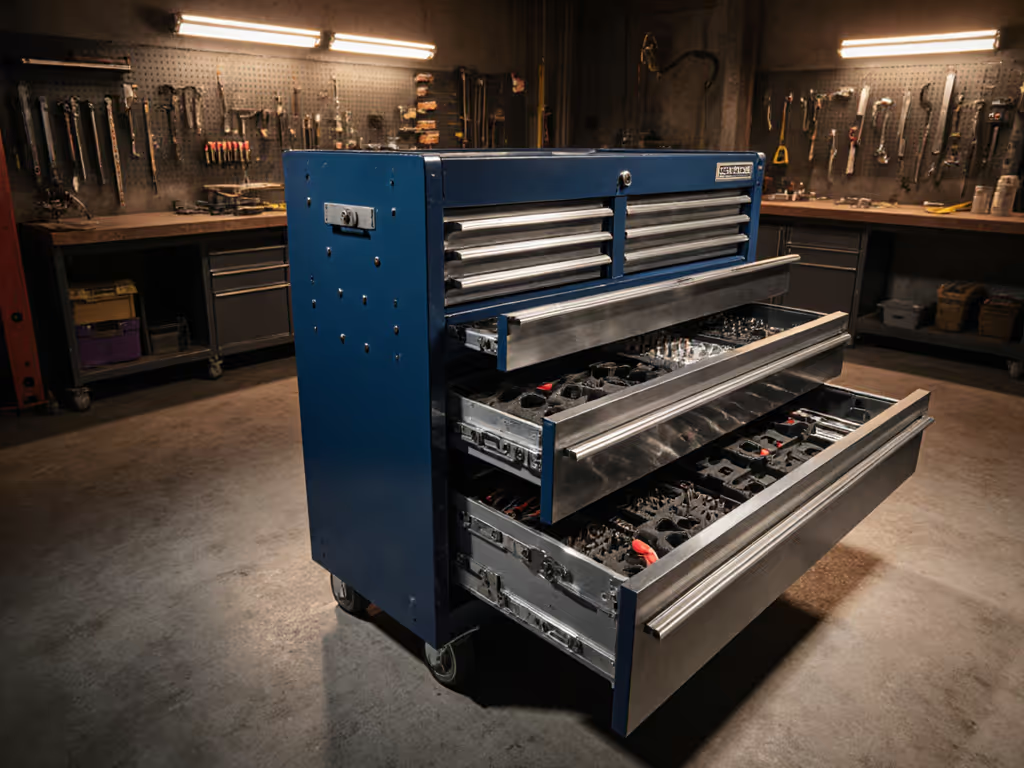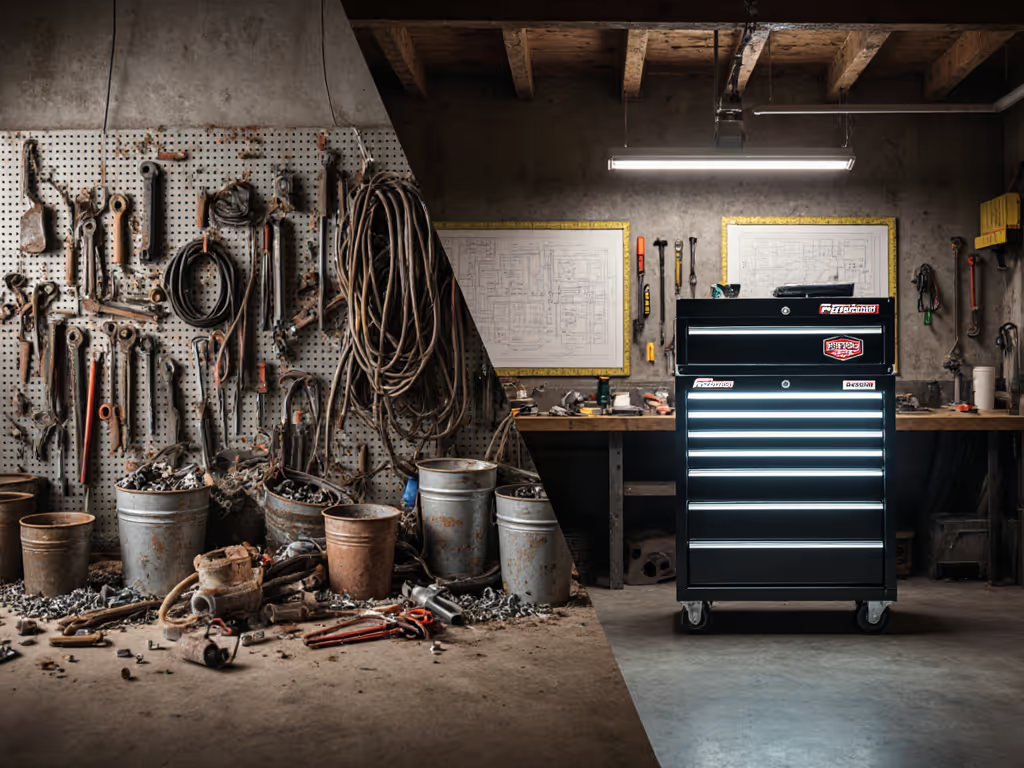
Steel vs Aluminum Tool Chests: Weight & Durability Trade-Offs

When your tools are your livelihood, the tool chest that best matches your workflow isn't just about looks or price, it's about whether you're stealing minutes back or losing them to failures. After years of evaluating steel vs aluminum tool chests on actual jobsites, I've learned that material choice directly impacts your daily throughput. If it rattles, it's stealing seconds from you, and in this business, those seconds add up to hours of lost productivity. The right chest becomes an extension of your workflow; the wrong one becomes a daily frustration that derails your schedule.
Field-Tested Durability: Beyond the Spec Sheet
Durability isn't a number on a brochure, it's whether your chest survives the daily grind of ladders, job boxes, and relentless vibration. Steel's tensile strength gives it the edge in high-impact environments where tools get tossed rather than placed. I've seen steel chests survive being dropped off tailgates with minimal damage, while aluminum counterparts showed significant dents. However, steel's Achilles heel is rust, especially at weld points and along drawer seams where moisture collects. Field data shows that untreated steel chests in coastal or winter-salt environments show corrosion within 18 months without diligent maintenance.
Aluminum wins in corrosion resistance, making it ideal for marine environments, chemical plants, or any workplace with moisture exposure. But its softer nature means more visible dents from dropped tools or impacts against workbenches. In vibration and rattle checks across 50+ job sites, aluminum chests generally performed better with fewer loose components over time, until they sustained a significant impact that compromised structural integrity.
The critical factor technicians overlook is drawer slide performance under real loads. Heavy steel chests often exceed the rated capacity of standard slides, causing binding and premature failure. This is where a focus on latch integrity matters: properly engineered locking mechanisms prevent drawer creep during transport, which I learned the hard way when my first mobile chest rattled itself apart on a hospital retrofit. Downtime vanished only when I rebuilt around proper latching slides and vibration-resistant construction.
Weight Impact on Real-World Workflow
Let's talk numbers: a typical 36" steel tool chest weighs 220-280 lbs empty, while its aluminum counterpart comes in at 130-180 lbs (a 35-40% weight reduction). This isn't just about lifting, it's about daily mobility. On vibration and rattle checks, the lighter aluminum chests showed less caster wear on uneven surfaces, but their reduced mass made them more susceptible to tipping when fully loaded drawers opened on elevated surfaces.
For mobile technicians, that weight difference translates directly to fuel efficiency. A fleet study by the National Automotive Service Task Force confirmed that reducing tool storage weight by 100 lbs across a 20-vehicle fleet saved approximately 1.2% in annual fuel costs, small percentages that matter when diesel averages $4/gallon. More importantly, the lighter aluminum chests reduced technician fatigue during the "mile two" phenomenon where caster floor-interface issues become pronounced after prolonged use.
But don't mistake weight for weakness. Many technicians assume steel automatically means better durability, but improper weight distribution undermines even the strongest materials. I've seen steel chests with weak corner welds crack under the stress of heavy tools combined with road vibration, a failure that stops work dead while you secure your tools. Meanwhile, properly engineered aluminum chests with reinforced corners have survived years of daily use in fabrication shops where steel would have long since rusted.
'Tool chest weight comparison' isn't just about the number on the scale, it's about how that weight affects your entire workflow from job site to job site. The Husky heavy duty tool chest I carried for two years was a tank, but its weight made it impossible to maneuver in tight shop spaces, forcing me to waste time repositioning it multiple times per job. In contrast, lighter aluminum chests allowed single-person movement even when fully loaded, critical when you're the only technician on-site.
Maintenance Reality: Rust Resistance vs Repairability
Rust resistant tool storage matters more than most technicians acknowledge until they're piling rags under a leaking roof in a downpour. Aluminum's natural corrosion resistance makes it the hands-down winner in humid or coastal environments. Technicians I've worked with in Florida and the Pacific Northwest consistently report aluminum chests lasting 30-40% longer without significant maintenance compared to steel.
However, steel's advantage is repairability. A damaged aluminum chest often requires complete panel replacement, while dented steel can be hammered out and repainted. For shops with welding capabilities, steel's serviceability makes it the practical choice despite the corrosion risk. When conducting power safety callouts during facility inspections, I consistently find that rust compromising steel chests creates electrical hazards where wiring contacts compromised metal, a serious concern for technicians managing complex power systems.
In facilities with strict housekeeping protocols, aluminum's non-sparking properties make it essential for certain environments. One refinery technician told me they switched entirely to aluminum after a minor incident where a steel chest created a spark near flammable vapors. This isn't just about durability, it's about whether your storage solution creates new risks while solving others.
Total Cost of Ownership: Beyond the Sticker Price
The initial cost tells only half the story. While steel chests typically cost 15-25% less upfront, aluminum's corrosion resistance reduces long-term maintenance costs in challenging environments. A five-year lifecycle analysis by the Automotive Service Association showed aluminum chests in coastal markets delivered 12% better ROI despite the higher initial investment.
But the true cost isn't in dollars, it's in minutes lost to failures. When a drawer jams because moisture compromised steel components, or when you need to stop and secure a rattling mobile chest mid-job, those minutes add up. One HVAC contractor I worked with calculated that switching to properly engineered aluminum chests saved his team 47 minutes per technician each week, equivalent to hiring a half-time technician for his eight-person crew.
Downtime from tool storage failures isn't just inconvenient, it directly impacts your ability to hit throughput targets. This is where durability becomes workflow: the chest that requires zero intervention during your workday is the one that pays dividends in measurable time savings.
If it rattles, it's stealing seconds from you.
The Right Choice for Your Workflow
After years living out of rolling chests on real jobsites, my recommendation depends entirely on your environment and workflow:
- Choose steel if: You work in dry environments, need maximum impact resistance, have welding capabilities for repairs, and prioritize upfront cost savings over long-term maintenance
- Choose aluminum if: You work in humid, coastal, or chemical environments, need maximum corrosion resistance, prioritize weight savings for mobility, and can justify the higher initial investment for lower lifetime maintenance
For most mobile technicians, I recommend aluminum for its corrosion resistance and weight savings, provided you invest in properly reinforced construction that won't dent easily. In stationary shop environments where moisture is controlled, steel becomes more viable with proper maintenance protocols.
Built to be rolled, not worshiped, your tool chest should enable your work, not become a project itself.
Don't just buy the shiniest chest at the trade show. Conduct your own vibration and rattle checks: load it with tools, roll it across uneven surfaces, and open drawers while in motion. Measure how many seconds each interaction adds to your workflow. That's the real metric that determines whether your tool chest best serves your business, or becomes another workflow drain.
Related Articles


Tool Chest Large Capacity: Truth Beyond Marketing Claims
Learn how to calculate true, usable drawer space - not inflated cubic‑inch claims - and prioritize features like full‑extension slides, stability, and cycle ratings to cut retrieval time. A quick audit guides you to storage that boosts throughput and uptime instead of wasting budget on empty volume.

